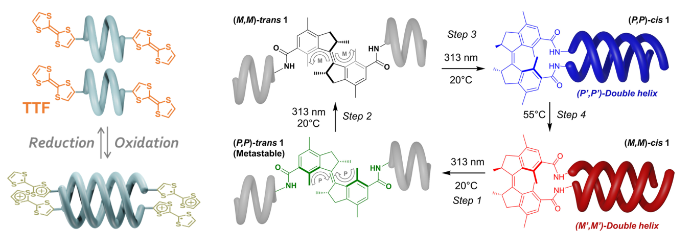- Index
- >Research
- >Team PulSAr
- >Research thematics
Research Thematics
Coordination driven self-assembly (S. Goeb, M. Sallé)
Metal-assisted self-assembly allows the synthesis of discrete molecular structures of various geometries under thermodynamic control. The resulting compounds generally show a cavity whose function depends on the nature of the side walls. A first line of our research concerns the development of stimulable tetrathiafulvalene-based electroactive structures able to modulate their guest affinity thanks to a redox stimulus. A second orientation concerns the development of interlocked coordination cages constructed from donor and acceptor units.

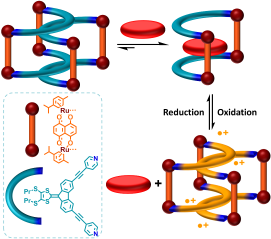
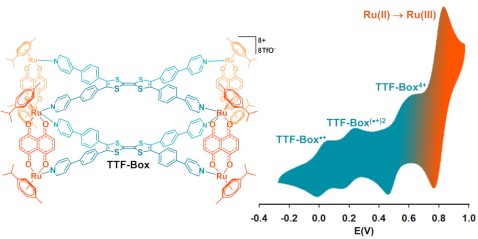
Recent financial supports
- PoDACC, 2021-2025, 422 k€, National Research Agency (ANR, PRC call)
- ANR JCJC BOMBER (2015-19) : 173 k€
- CNRS, EMERGENCE@INC, INTERLOCKED (2018-2019) : 65 k€
- Lumomat PHOTOCAGE (2019-20) : 60 k€
Supramolecular photo- and electroactive polymers (D. Canevet, M. Sallé)
Self-assembling functional monomers constitutes a key in bottom-up strategies to prepare nanostructured systems. Among different applications, designing nano- and microwires presents much interest to elaborate conducting and/or luminescent materials. In this context, we notably focus research efforts on pyrene-based organogelators (ex : Chem. Asian. J. 2016, Lai ; Chem. Eur. J. 2016, Lai, hot paper), which display singular spectroscopic properties. In the same vein, we are also interested in a family of organogelators, which displays unexpected nonlinear optical properties. Indeed, the functionalization of push-pull systems by moieties favouring unidirectional aggregation allowed the preparation of original xerogel-based materials, which spontaneously display a second harmonic generation activity (no need for pre-processing) (JACS, 2016, Marco ; Soft Matter 2016, Aparicio ; Org. Biomol. Chem. 2018, Marco).
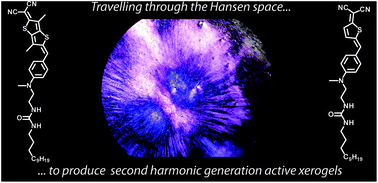
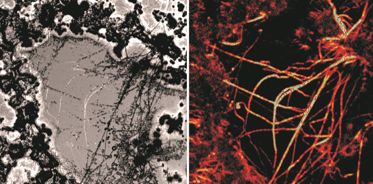
Recent financial supports
- FOGEL, 2017-2021, 402 k€, National Research Agency (ANR, PRC call)
Photo- and redox-switchable foldamers (D. Canevet, M. Sallé)
Foldamers constitute flexible architectures that fold and adopt well-defined and compact conformations. Among various families of foldamers, our research activities mainly focus on oligomers that tend to hybridize to form multiple helices. The concepts we are working on follow two guidelines: 1) design pi-functional foldamers whose hybridization equilibrium can be shifted through redox and photochemical stimulations, and alternatively, through host-guest chemistry, and reciprocally, 2) tuning the physicochemical properties of helical foldamers by triggering or impeding double helix formation.
Recent financial supports
- RECHERCHE, 2020-2024, 210 k€, National Research Agency (ANR, JCJC call)
- ARDENT, 2020-2021, 154 k€, Pays-de-la-Loire Region
- SKYFALL, 2024-2025, 196 k€, Marie Skłodowska-Curie Action
Light-frozen dynamic covalent synthesis of electron-deficient organic semiconductors (A. Goujon)
This approach combines a dynamic covalent approach with a kinetic lock (visible light) to produce complex conjugated systems of various sizes and topologies in a single synthetic step. Electron-deficient materials relevant to organic electronics applications are targeted, in particular nanographenes, ribbons, polymers and multidimensional materials.

Recent financial supports
- PhotoFreeze, 2024-2028, 1.5 M€, European Research Council (ERC StG 2023)
- CURVY, 2022-2024, 144 k€, Pays-de-la-Loire Region
- PhotoSynth, 2021-2024, 224 k€, National Research Agency (ANR, JCJC call)
- AMAZ, 2020-2022, 30 k€, Angers Loire Métropole and University of Angers, AAP PULSAR-CR


